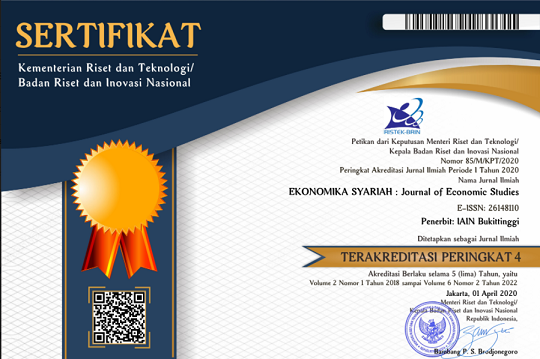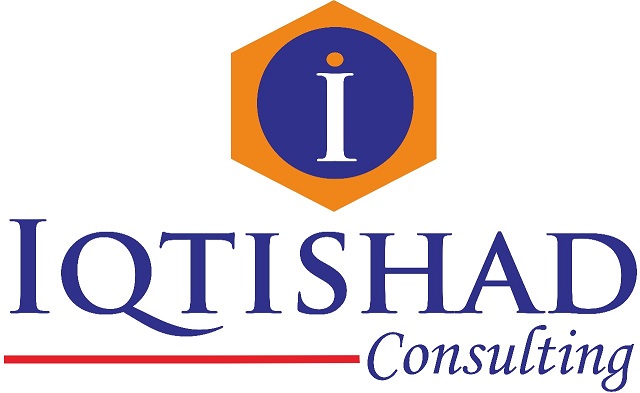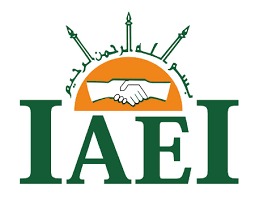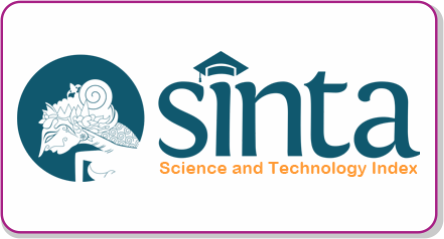Analysis of Asset and Financing Contribution to Islamic Banking Profit in Indonesia by Vector Autoregression (VAR) Method
DOI:
https://doi.org/10.30983/es.v8i2.8463Keywords:
Assets, Financing, profits, Islamic bankingAbstract
The profit growth of Islamic banks in Indonesia tends to decline from the Covid-19 period to date. However, the number of assets and the amount of financing of Islamic banks tend to increase from one period to the next. This article discusses the contribution of assets and financing to the profitability of Islamic banking in Indonesia. This article was created using quantitative research methods. The data comes from the Financial Services Authority (OJK), namely data related to the amount of profit, assets, and financing in the Sharia Banking Statistics report, especially Sharia Commercial Banks from 2019 to 2023. Then the analysis of the contribution between the variables of assets, financing and profits of Islamic banks was analyzed using an econometric approach, namely the Vector Auto Regression (VAR) Method. The results of this study show that the profit variable of the previous period has a negative contribution to the endogenous profit variable. However, asset and financing variables in the previous period contributed positively to endogenous profit variables. There has been no previous research that discusses the contribution of variable assets and financing to the profit of Islamic banking in Indonesia using Vector Autoregressive Models. In order for the profit of Islamic banks to always increase, Islamic banks must always increase the number of their assets by increasing the amount of financing disbursed.
Pertumbuhan laba bank syariah di Indonesia cenderung menurun dari periode Covid-19 hingga saat ini. Namun, jumlah aset dan jumlah pembiayaan bank syariah cenderung mengalami peningkatan dari satu periode ke periode berikutnya. Artikel ini membahas mengenai kontribusi aset dan pembiayaan terhadap profitabilitas perbankan syariah di Indonesia. Artikel ini dibuat dengan menggunakan metode penelitian kuantitatif. Data berasal dari Otoritas Jasa Keuangan (OJK), yaitu data terkait jumlah laba, aset, dan pembiayaan pada laporan Statistik Perbankan Syariah khususnya Bank Umum Syariah dari tahun 2019 sampai dengan tahun 2023. Kemudian analisis kontribusi antara variabel aset, pembiayaan dan laba bank syariah dianalisis dengan menggunakan pendekatan ekonometrika yaitu Metode Vector Auto Regression (VAR). Hasil temuan penelitian ini menunjukkan bahwa variabel laba periode sebelumnya memiliki kontribusi negatif terhadap variabel laba endogen. Namun, variabel aset dan pembiayaan periode sebelumnya berkontribusi positif terhadap variabel laba endogen. Belum ada penelitian sebelumnya yang membahas mengenai kontribusi variabel aset dan pembiayaan terhadap laba perbankan syariah di Indonesia dengan menggunakan Vector Autoregressive Models. Agar laba bank syariah selalu meningkat, maka bank syariah harus selalu meningkatkan jumlah asetnya dengan cara meningkatkan jumlah pembiayaan yang disalurkan.
References
Abbas, N., Raza, M. A., Paracha, Z., & Shahid, M. S. (2023). A Comprehensive Examination of Internal Factors Impact on Islamic Banks Profitability in Pakistan: A Quantitative Analysis. Journal of Accounting and Finance in Emerging Economies, 9(4). https://doi.org/10.26710/jafee.v9i4.2885
Abusharbeh, M. (2020). Determinants of Islamic bank financing in the Middle East: Vector Error Correction Model (VECM). Investment Management and Financial Innovations, 17(4), 285–298. https://doi.org/10.21511/imfi.17(4).2020.25
Alali, S. M., Shawaqfeh, G. N., & Almomani, M. A. A. (2024). Bank Profitability Indicators in the Context of Modern Technology: a Comparative Study (Commercial Banks, Islamic Banks). Revista de Gestao Social e Ambiental, 18(9), 1–17. https://doi.org/10.24857/rgsa.v18n9-034
AlKhazali, O., Aguir, I., Helmi, M., & Mirzaei, A. (2024). Impact of capital inflows on bank profitability: a comparative analysis of dual banking systems. International Journal of Islamic and Middle Eastern Finance and Management, 17(3), 401–422. https://doi.org/10.1108/IMEFM-04-2023-0148
Alqsass, M., & Maali, H. S. M. (2023). The impact of liquidity risk on profitability of Islamic Banks (Case study: Based on Mena Region). The Seybold Report, 18(2), 479–492. https://doi.org/10.17605/OSF.IO/BA3V7
Alqsass, M., Zureigat, B., Jaradat, H., Alsmadi, A., & Maali, H. (2024). The Impact Of Insolvency Risk On Profitability Of Banking System. Quality - Access to Success, 25(201), 25–30. https://doi.org/10.47750/QAS/25.201.04
Alshubiri, F., & Al Ani, M. K. (2023). Financing and returns of Shari’ah-compliant contracts and sustainable investing in the Islamic banking of Oman. In Economic Change and Restructuring (Vol. 56, Issue 4). Springer US. https://doi.org/10.1007/s10644-023-09522-8
Boubakri, N., Mirzaei, A., & Saad, M. (2023). Bank lending during the COVID-19 pandemic: A comparison of Islamic and conventional banks. Journal of International Financial Markets, Institutions and Money, 84(January), 101743. https://doi.org/10.1016/j.intfin.2023.101743
Clark, J. B. (1899). John Bates Clark The Distribution of Wealth A Theory of Wages , Interest and Profits.
Çuruk, S. A., Kahraman, Ü. M., & Isik, M. (2020). Does Bank Type Affect the Profitability? An Econometric Research on Conventional and Islamic Banks. Turkish Studies-Economics, Finance, Politics…, May.
Derbali, A. (2021). Determinants of the performance of Moroccan banks. Journal of Business and Socio-Economic Development, 1(1), 102–117. https://doi.org/10.1108/jbsed-01-2021-0003
Dodi, S., & Arief, D. (2018). Islamic Bank Profitability : A Study of Islamic Bank in Indonesia. The International Journal of Business Review (The Jobs Review), 1(1), 51.
Gazi, M. A. I., Karim, R., Senathirajah, A. R. bin S., Ullah, A. K. M. M., Afrin, K. H., & Nahiduzzaman, M. (2024). Bank-Specific and Macroeconomic Determinants of Profitability of Islamic Shariah-Based Banks: Evidence from New Economic Horizon Using Panel Data. Economies, 12(3). https://doi.org/10.3390/economies12030066
Ibrahim, Z., Effendi, N., & Kurniawan, R. (2022). Determinants of profit and loss sharing financing in Indonesia. Journal of Islamic Marketing, 13(9), 1918-1939.
Iqbal, M. S., Fikri, S. M., & Ahmi, A. (2023). Relationship Between Musharakah, Kredit Risk, and Profitability in Pakistan’s Islamic Banks. Journal of Applied Economics and Business Studies, 7(3), 75–91. http://www.aebjournal.org/articles/0701/070100.pdf
Isayas, Y. N. (2022). Determinants of banks’ profitability: Empirical evidence from banks in Ethiopia. Cogent Economics and Finance, 10(1). https://doi.org/10.1080/23322039.2022.2031433
Kulmie, D. A., & Omar, M. M. (2024). The Impact of Participatory Islamic Finance On Shari’ah Banks’ Profitability. Asian Economic and Financial Review, 14(7), 482–496. https://doi.org/10.55493/5002.v14i7.5083
Lalon, R. M., Anika Afroz, & Tasneema Khan. (2023). Impact of Bank Liquidity and Macroeconomic Determinants on Profitability of Commercial Banks in Bangladesh. International Journal of Economics and Financial Issues, 13(6), 177–186. https://doi.org/10.32479/ijefi.15228
Lowe, A., & Yesh, Preda, A. (2020). A research agenda for problematising profit and profitability. Accounting, Auditing & Accountability Journal, 33(4), 681–698. https://doi.org/10.1108/AAAJ-11-2019-4243
Malim, N. A. K. (2020). The Determinants of Islamic and Conventional Banking Profitability in Asian Countries. Management and Accounting Review, 19(3), 49–67. https://api.elsevier.com/content/abstract/scopus_id/85113257101
Mohammad, K. U., & Khan, M. R. (2024). Liquid Asset Holdings and Banking Profitability: Evidence from South Asia. Journal of Central Banking Theory and Practice, 13(2), 129–152. https://doi.org/10.2478/jcbtp-2024-0016
Mukhibad, H., Setiawan, D., Aryani, Y. A., & Falikhatun, F. (2024). Cognitive Board Diversity and Profitability – Evidence From Islamic Banks in Southeast Asia. Asian Journal of Accounting Research, 9(3), 182–200. https://doi.org/10.1108/AJAR-02-2023-0034
Nabella, S. D., Rivaldo, Y., Sumardin, S., Kurniawan, R., & Sabri, S. (2023). the Effect of Financing on Islamic Banking Assets With Non-Performing Finance As a Moderating Variable in Indonesia. Jurnal Ekonomi, 12(01), 998-1004.
Nadratuzzaman Hosen, M., Muhari, S., & Costner Kardius, K. (2021). The Effects of Productivity and Liquidity on the Profitability of Islamic Banks in Indonesia. Al-Iqtishad: Jurnal Ilmu Ekonomi Syariah, 13(2), 411–430. https://doi.org/10.15408/aiq.v13i2.22585
Ninglasari, S. Y., Negoro, N. P., & Himmawan, M. F. (2024). What Drives the Profitability of Islamic Banks ?: Insights from Indonesia Using the Vector Error Correction Model ( VECM ) Approach. 195–210. https://doi.org/10.18502/kss.v9i32.17436
Nouman, M., Hashim, M., Trifan, V. A., Spinu, A. E., Siddiqi, M. F., & Khan, F. U. (2022). Interest rate volatility and financing of Islamic banks. PLoS ONE, 17(7 July), 1–21. https://doi.org/10.1371/journal.pone.0268906
Okphiabhele, E., Ibitomi, T., Dada, D. A., & Micah, E. E. M. (2022). Working Capital Management and Profitability of Industrial Goods Sector in Nigeria. Journal of Accounting and Financial Management, 10(5), 74–90. https://doi.org/10.56201/jafm.v9.no7.2023.pg97.114
Otuyo, I. J., & Abiodun, J. H. (2021). The Juristic Framework of Mudarabah Contracts and Its Modern Practices. International Journal of Acaemic Research, 10(1), 32–42.
Puteri, H.E., Parsaulian, B. and Azman, H.A. (2022), "Potential demand for Islamic banking: examining the Islamic consumer behavior as driving factor", International Journal of Social Economics, Vol. 49 No. 7, pp. 1071-1085. https://doi.org/10.1108/IJSE-10-2021-0614
Qabajeh, M., Almajali, D., Natour, A. R. Al, Alqsass, M., & Maali, H. (2023). The impact of operational risk on profitability: Evidence from banking sector in the MENA region. Uncertain Supply Chain Management, 11(4), 1459–1466. https://doi.org/10.5267/j.uscm.2023.7.023
Rizal, F. (2018). Faktor Penentu Profitabiitas Bank Umum Syariah di Indonesia (Pasca Peralihan Tugas Pengawasan Perbankan dari BI ke OJK). El-Barka: Journal of Islamic Economics and Business, 1(1), 53. https://doi.org/10.21154/elbarka.v1i1.1441
Ryandono, M. N. H., Kusuma, K. A., & Prasetyo, A. (2021). The Foundation of a Fair Mudarabah Profit Sharing Ratio: A Case Study of Islamic Banks in Indonesia. Journal of Asian Finance, Economics and Business, 8(4), 0329–0337. https://doi.org/10.13106/jafeb.2021.vol8.no4.0329
Saggay, A., Abdelsalam, M. M., & Jbir, R. (2023). Determinants of profitability in Islamic Banks: The Kingdom of Saudi Arabia market. In Data Analytics for Management, Banking and Finance: Theories and Application (pp. 307–317). https://doi.org/10.1007/978-3-031-36570-6_14
Shvachych, G., & Kholod, E. (2020). Research of the Enterprise Profitability Strategy. Three Seas Economic Journal, 1(1), 110–115. https://doi.org/10.30525/2661-5150/2020-1-16
Sobol, I., Dopierała, Ł., & Wysiński, P. (2023). Is the Profitability of Islamic and Conventional Banks Driven by the Same Factors?—A study of Banking in the Middle East. In PLoS ONE (Vol. 18, Issue 8 August). https://doi.org/10.1371/journal.pone.0289264
Suryani, Y., & Ika, D. (2019). Faktor-Faktor Yang Mempengaruhi Pertumbuhan Laba Bank Umum Syariah Di Indonesia. Jurnal Akuntansi Dan Bisnis, Jurnal Program Studi Akuntansi, 5(2). https://doi.org/10.31289/jab.v5i2.2642
Syahri, N. A., & Harjito, D. A. (2020). The Effect of Financing Using the Principle of Profit-Loss Sharing on Profitability Level of Commercial Islamic Bank Registered in Bank Indonesia. Asian Journal of Islamic Management (AJIM), 2(1), 46–58. https://doi.org/10.20885/ajim.vol2.iss1.art5
Wahyuni, S., Handayani, E., & Pujiharto. (2022). Earnings Management: an Analysis of Corporate Strategy, Financial Performance, and Audit Quality. Asian Economic and Financial Review, 12(8), 593–603. https://doi.org/10.55493/5002.v12i8.4564
Widarjono, A. (2020). Does the Volatility of Macroeconomic Variables Depress The Profitability of Islamic Banking? Jejak (Journal of Economics and Policy), 13(1), 30–42. https://doi.org/10.15294/jejak.v13i1.19460
Zheng, C., Rahman, M. A., Hossain, S., & Moudud-Ul-Huq, S. (2023). Does Fintech-Driven Inclusive Finance Induce Bank Profitability? Empirical Evidence from Developing Countries. Journal of Risk and Financial Management, 16(10). https://doi.org/10.3390/jrfm16100457
Downloads
Published
How to Cite
Issue
Section
Citation Check
License
Copyright (c) 2024 Nofinawati, Dede Ruslan, Muhammad Fitri Rahmadana, Adanan Murroh Nasution

This work is licensed under a Creative Commons Attribution-ShareAlike 4.0 International License.
Authors who publish with this journal agree to the following terms:
- Authors retain copyright and grant the journal right of first publication with the work simultaneously licensed under a Creative Commons Attribution-ShareAlike 4.0 International License that allows others to share the work with an acknowledgment of the work's authorship and initial publication in this journal.
- Authors are able to enter into separate, additional contractual arrangements for the non-exclusive distribution of the journal's published version of the work (e.g., post it to an institutional repository or publish it in a book), with an acknowledgment of its initial publication in this journal.
- Authors are permitted and encouraged to post their work online (e.g., in institutional repositories or on their website) prior to and during the submission process, as it can lead to productive exchanges, as well as earlier and greater citation of published work (See The Effect of Open Access).













